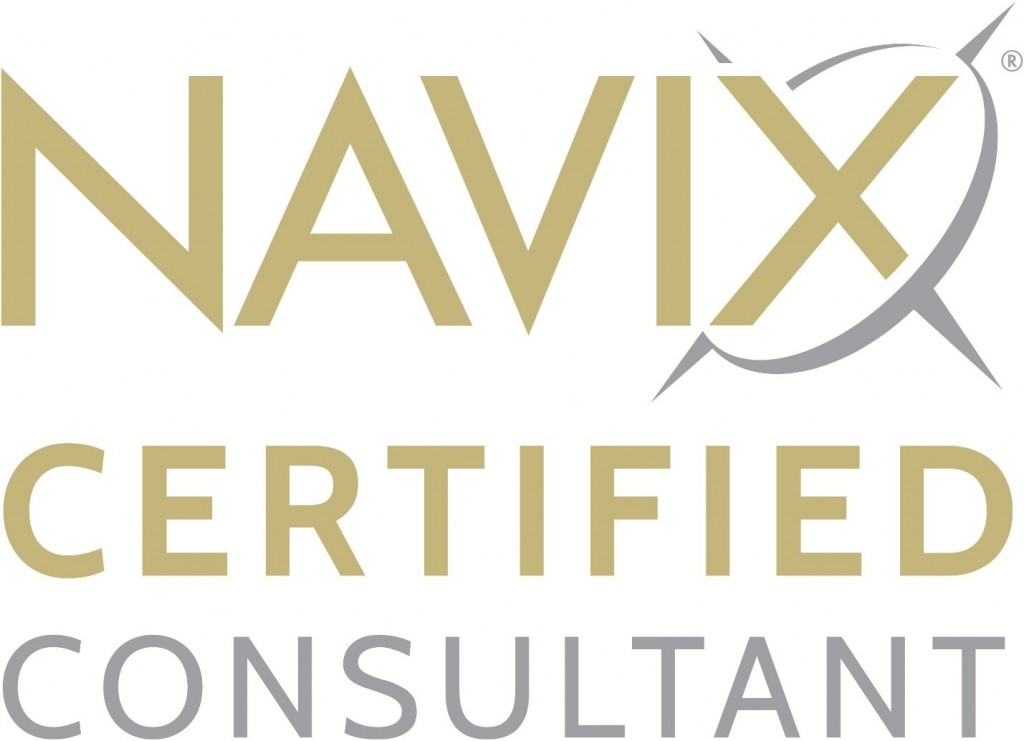
Archive for August, 2018
Planning on Passing Your Business to the Kids? Consider Selling a Piece of It First
If your exit strategy is to pass your business down to the next generation of family members, selling a piece of the company to an outside buyer may surprisingly make a lot of sense as part of your overall exit plan. Normally, keeping the business in the family means just that—preserving family ownership, not selling to an outsider. But selling a minority interest (less than 50%) of the company to an outside investor can help overcome some of the more difficult challenges that family business owners face in their exit and succession planning. Here’s how.
Selling a non-controlling interest in the company to an outside investor, often a private equity group (PEG) or a family office, can solve four problems that commonly arise when trying to achieve a smooth exit for outgoing family owners and prepare the next generation of family owners to lead the company effectively. These four problems include:
-
1. Liquidity for the Outgoing Owners
One of the most challenging issues to resolve is how to provide financial income and economic freedom for the outgoing owners, whom we will call Dad and Mom. Commonly, Dad and Mom have invested heavily in the company over the years, and consequently, a significant portion of their net worth is tied up in the company and its supporting assets, leaving Dad and Mom unable to retire or step down from the company without somehow obtaining cash from the business. Yet the company typically does not have a large amount of surplus cash sitting around to fund Dad and Mom’s exit. As they lack the cash, the most common solution is keeping Mom and Dad on the payroll well after the next generation has taken over the company. This rarely works for very long. At some point, Dad and Mom may come to resent and/or worry about being continuously dependent on the company. Or, the next generation, whom we will call the Kids, may grow tired of the payroll burden if they do not see any light at the end of the tunnel. Keeping Dad and Mom permanently on the payroll is not a winning solution.
Selling a minority interest of the company to an outside investor presents a more viable solution on how to create financial independence for Dad and Mom. The outside investor’s cash infusion can fund some or all of the outgoing parents’ financial needs, freeing Dad and Mom from staying on the payroll indefinitely and giving them power over their own assets. Meanwhile, the Kids maintain a controlling interest in the company. At a future date, they may pursue buying out the minority investor if they desire to restore 100% family ownership of the company.
2. Eliminating Personal Guarantees
A second significant financial obstacle common within family-owned companies deals with personal guarantees on the company’s commercial or trade debt. Often, Dad and Mom have covered the guarantees up to that point, but the Kids lack the collateral and leadership track record to assume that responsibility when Dad and Mom exit. This scenario puts Dad and Mom in the uncomfortable situation of turning over operational control of the company to the Kids while having to stay on the hook for the financial risk. Few parents will be enthusiastic about that prospect. The Kids have reason to be unhappy too, as they will likely wish to avoid burdening their parents. Also, as long as Dad and Mom provide the personal guarantees, they will have the power to exert influence or control over the company, which is typically a sensitive subject for the Kids. If the issue of personal guarantees remains unaddressed, it can prevent the entire family from achieving a successful exit.
Selling a minority portion of the company to an outside investor, such as a PEG or family office, can eliminate the personal guarantee barrier to exit success. The entrance of an outside investor can give lenders sufficient confidence and collateral to remove their requirement for any personal guarantees. Furthermore, PEGs and family offices can often secure for the company more favorable debt terms and rates due to their experience and long-standing relationships with their preferred lenders.
3. Insufficient Professional Management
One other major challenge within many family businesses is how to inject professional management expertise into the company without surrendering the family’s leadership of the company. This need becomes acute as the company grows and transitions from one ownership generation to the next. You have likely witnessed family-led companies that struggled or perhaps even collapsed because the successor generation lacked sufficient leadership talent and experience to run the company.
Bringing in an outside investor can upgrade the company’s professional management without displacing the family’s controlling interest. First, outside investors will usually occupy several seats on the company’s board of directors. The right investor will fill these seats with quality leaders who enhance the company’s strategic leadership, experience, and industry contacts. Additionally, as part of its investment, the outside investor may provide funds to hire new managers and employees to work for the family owner. Commonly needed positions include an experienced chief financial officer (CFO) and professional sales manager/leader. A significant upgrade in talent and experience at the board and management team level is achieved without undermining the family’s operational control of the company.
4. Objective Advice and Counsel
Within family-owned companies, personal relationships and dynamics can encroach into business matters, blurring communications, responsibilities, and accountabilities. These relationships can harm company growth and prevent Dad, Mom, and the Kids from achieving a smooth exit and succession. Even within well-functioning family relationships, when facing serious business issues, it is difficult to maintain objectivity when there are only family members in the room.
Here, too, an outside investor can add value to the family business as it moves through a succession process. The investor, again through its minority representation on the board, adds the missing third-party objectivity, perspective, and controls. For example, the investor will likely require the company to prepare annual business plans and budgets and periodically review them at the board level. Also, executive compensation—always a touchy subject in a family-owned company—will be set according to market rates and evaluated objectively according to human resources best practices. These types of steps reduce the risk of nepotism and address the concern that family politics will detrimentally influence major business decisions.
Conclusion
For the benefits of succession to materialize, family-owned businesses must work with the “right” investor – one whose values, business model, and expectations align with those of the family. As such, finding the right investor will take time and careful preparation. Ironically, the best way to keep the business in the family may be to sell a piece of the business to somebody outside of the family.
To discuss your unique business, and how to plan for and achieve a successful exit, Call 772-210-4499 or email Tim to schedule a confidential, complimentary consultation.
When It Comes to Exit, Do Not Go Out on Top
Athletes, celebrity entertainers, politicians, models—everybody seems to want to “go out on top” at the end of their careers. At first glance, it should be the same for business owners; they, too, should strive to go out on top when they exit from their business. After all, in order to sell the business for maximum value, create a sustained business legacy, and exit under their own terms, owners should exit at the business’s peak—right? Perhaps not.
Few companies grow in a perfectly straight upward line; most experience varying rates of growth over time. Consider the following simple illustration of a business’s growth cycle, divided into five phases, lettered A through E.
Ask a room full of business owners which is the ideal phase from which to exit their company, and the most common answer is Phase C as shown below.
On the surface this makes sense. If your goal is to sell the business for its maximum value, it seems logical to sell when revenues and profits are at their highest. If you want your company to continue so that employees and customers are not left stranded, then you might also think that the business needs to be at peak performance to survive the transition. However, it often does not work that way.
To achieve a happy and successful exit, do not go out on top. Rather than exit at Phase C, owners must consider exiting at Phase B in order to achieve their best results.
Here is why. Let’s examine the goal of selling a business for the maximum value. While there are many factors that contribute to a business’s sale price, one of the most important is the company’s prospects for future growth. Buyers do not purchase a business for its past performance—they only use past performance as a reference point for evaluating the future growth. A business that has peaked is potentially less valuable to a buyer if the company’s revenues and profits may be expected to slow or decline in the immediate future. Buyers need to believe that the business’s next three to five years are likely to be a time of continued profitable growth. That is Phase B, not Phase C.
There is a second reason to consider selling a business to maximize value during Phase B rather than Phase C. About two-thirds of business sales include an earn-out for the seller. Earn-outs are a provision in the deal where the seller may receive additional future compensation based on the business achieving certain future results, such as revenue or profitability goals. Selling the business at its peak in Phase C could lead to receiving less or even nothing from the earn-out.
Next, let’s examine the goal of creating a sustained business legacy. Owners who exit at the peak are turning over their company to successors right when that business is potentially about to go through a difficult time. As the business leaves Phase C, it will likely experience some or all of the following: slowed growth, reduced profits, tightening cash, shrinking margins, increased competition, or declining backlog. Turning over a business in that environment is not a recipe for a smooth transition and does not bode well for creating a sustained business legacy. Owners who want their companies to not only survive their departure but also thrive after their exit may need to act in Phase B, not Phase C.
Last, let’s examine the goal of exiting on one’s own terms. For many owners, this means during and after exit they need to have peace of mind that they did things the right way. Achieving peace of mind comes from honoring employees, respecting customers, acting consistently by a set of values, and upholding the company’s reputation. Owners who exit in Phase C risk jeopardizing all of this, again because of the potential difficulties the business may face ahead as it leaves Phase C. The new owners and leaders may need to take corrective actions such as cutting jobs or scaling back services, undermining the outgoing owner’s sense of leaving the company in good condition.
For all of these reasons, it may be advantageous not to exit on top, but rather before the company reaches its next performance peak. This is easier said than done. First, you must assess where the business is within these various phases. While it is impossible to predict the future, it is possible to make forecasts based on careful monitoring of industry and economic trends, combined with proven strategic planning processes. You are not guaranteed to be right, but a sound forecast increases the likelihood of success.
The second major challenge when attempting to exit prior to the company’s peak is emotional—it is difficult to leave a business in Phase B. Phase B typically produces some to all of the following: rapid sales growth, increased profits, strong backlog, improved margins, surplus cash, eager customers, and high employee morale. Few owners want to exit from a company while having that much fun. Yet to exit successfully, that is often what is required.
Consider watching our on-demand informational webinar on how to know when it’s time to exit.
To discuss your unique business, and how to plan for and achieve a successful exit, Call 772-210-4499 or email Tim to schedule a confidential, complimentary consultation.
Finding Your Unicorn: Why Some Strategic Buyers Pay Seemingly Mythical Value for Certain Acquisitions, and How to Find this Buyer for Your Business
Are the stories about companies selling for incredibly high multiples fact or fiction? Are they true? Why does this happen, and how do you find that one buyer who may pay top dollar for your company when you exit?
In this webinar, NAVIX guest speaker Andy Mason shares his decades of experience to explain the difference between your company’s “core value” that most buyers may pay for, and the “strategic value” that may lead to a huge premium price at sale.
Join us to learn:
- How and why traditional valuation methodologies are deficient
- The difference between “core value” and “strategic value”
- How to find your unicorn buyer
Register Now
Check out our archive of all past NAVIX exit planning webinars:
Click here to view now
Nine Ways Buyers Have You at a Disadvantage When You Sell Your Company
If you intend to exit from your company one day by selling to an outside buyer, at some point in the process, you may well find yourself feeling like the diminutive David facing the monstrous Goliath. And for good reason. Buyers possess fundamental advantages over most sellers due to their diverse experiences and resources. These advantages enable buyers to potentially dominate the process of acquiring your company and put you at risk of receiving a lower price and less favorable terms than might otherwise be available. When you go to exit, if you are unaware and unprepared to counter buyers’ advantages, your exit may be less profitable and more stressful.
Here are nine specific ways buyers often have the upper hand and how to combat them.
- Money/Cash – In most situations, the potential buyers have it and you do not. There’s an old saying that rings especially true here: “In any negotiation between two parties where one has all the money and the second has none, the party with the money wins.”
- Emotional Investment – Buyers interested in acquiring your company are likely to have low to no emotional investment in the deal, whereas it’s common for business owners to describe the companies as “their baby” or “their third child”. A deep emotional investment in the business is an asset and a source of pride while growing and leading the company, but it can make you vulnerable during the negotiation process.
- Deal Importance – Many buyers are serial purchasers—if acquiring your company falls through, they simply move onto the next transaction without suffering any losses. For most owners, getting the deal done is supremely important. Without a successful transaction, you likely cannot achieve your business and personal goals.
- Internal Team Experience – Buyers usually have a team of full-time personnel with significant deal experience, often with a history of dozens of transactions. Most business owners have few to no employees with deal experience, including themselves.
- Outside Specialists – Buyers usually have a team of external advisors they regularly go to for transaction advice and services, including lawyers, accountants, investment bankers, commercial bankers, and others. These advisors often specialize exclusively in transaction work. In contrast, business owners often use their existing generalist advisors who may have limited deal experience.
- Market Knowledge –Your future acquirer will most likely have deep knowledge about relevant M&A activity in your industry at the time you plan on selling your company. Through formal research and first-hand experience, they will likely know key M&A trends, multiples, players, and opportunities. Sellers often lack this information and risk over-relying on anecdotes and assumptions.
- Experienced Negotiators – Buyers are not infallible superbeings, but most have extensive experience negotiating deals. Therefore, they may know a few tactics that help advance their interests and position. Most owners get good marks on street smarts, but in many cases, the owners’ job does not require him or her to negotiate a steady stream of deals worth many millions of dollars.
- The Process is the Job – Buyers, whether strategic buyers or financial buyers, typically have people they employ whose primary or sole job function is to work on potential acquisitions. For them, this process is their job. In contrast, for sellers like you, preparing the company for sale and then supporting the sale process is a burden you will absorb on top of running the company. For you, the process is a distraction from your everyday job and a big drain on time, money and energy.
- All in a Day’s Work – Because the process is the job for your future buyer’s people, the work, analysis, stress, and decision-making associated with potentially acquiring your company will be just a typical day’s work for them. When you finally go to sell your company, you will likely find yourself on unfamiliar ground, far outside your experience and comfort zone.
These potential buyer advantages will not occur in every given situation, and not all buyers are equally experienced and competent. However, given these obvious advantages, it becomes easy to see how buyers can outmaneuver sellers if left unchecked. As a future seller, you can take reasonable precautions to reduce or eliminate these buyers’ advantages:
- Add people to your team who have deal experience. It is not unusual for our clients, once they recognize a sale is in their future, to fill open senior management positions with people who have deal experience.
- Build a team of specialist advisors. Your accountant, lawyer, investment banker, and exit planner should all have extensive experience working with companies and transactions similar to yours.
- Meet with your advisory team well in advance of your future sale. Too many owners only convene an advisory team shortly before they want to sell. That’s a mistake. Get your team together several years before you intend to sell and meet with them at least annually. They can help prepare you for the process and experience. They also should be able to help educate you on relevant market conditions, trends, and valuation multiples.
- Distribute surplus cash from the company to build your personal liquidity prior to the sale. The more liquidity you have at home, the less stressful the sale process is likely to be.
- Delegate responsibilities off your plate to others on your team for two potential reasons. First, reducing dependency on you usually increases company value. Second, freeing up time creates additional bandwidth for you to support the exit process without getting overwhelmed.
- Take the time to educate yourself. Your advisors will help, but you can learn a lot about what to expect with just a little research. This complimentary webinar, “What to Expect When You are Expecting to Sell,” is a good starting point.
Preparing for exit well in advance and with expert help will go a long way towards evening the odds between you and your buyers. At NAVIX, our clients start the sale process prepared, with more than just a slingshot in hand. Contact us to discuss your exit goals and get answers to your exit questions.
To discuss your unique business, and how to plan for and achieve a successful exit, Call 772-210-4499 or email Tim to schedule a confidential, complimentary consultation.
How a Bag of FRITOS® Can Help You Plan Your Business Exit
According to the FritoLay company website, FRITOS® are “still satisfying fans after more than 80 years.” Surprisingly, these classic corn chips can also help business owners plan for and achieve successful exits. Here’s how.
Exiting from a company is expensive. If you are like most owners, your business exit will be the costliest thing you ever do. Nobody likes incurring exorbitant costs, but in this situation, costs incurred at exit can be more than merely distasteful. High costs can undermine or outright block you from achieving a successful and happy exit. If exit costs are too high, you may not have enough net proceeds to achieve your personal financial goals and needs. Excessive costs also take away from your ability to reward and thank key employees at your exit, and you may find yourself unable to exit at all, trapped inside your company. For these reasons, it is imperative that you understand the costs you face at your exit and begin planning well ahead on how to minimize them.
Unfortunately, many owners get caught off-guard at exit, surprised by the different types of expenses and dollar amounts. It is not difficult to understand why this occurs—most owners have never exited a company before, so the process and costs are unfamiliar. That is where our bag of FRITOS® comes in handy. Separate this salty snack’s name into its component letters, F-R-I-T-O-S, and you have a summary of the costs commonly incurred at exit:
- Fees
- Repairs & Improvements
- Taxes
- Opportunity
- Soft
Let’s briefly look at each cost category:
Fees (F) represent costs incurred from professional service providers to help you prepare and execute the transaction. Whether you are selling your company to an outside buyer, selling to your employees, or giving it to your children, there will be some degree of fees involved. In nearly all situations, your exit will require professional accounting and legal work. If you intend to sell the company, you will likely also wish to invest in investment banking services. Fees vary greatly from one exit to the next, but do not be surprised if the total fees approach five to ten percent of the total company value, especially if you are selling the company.
Repairs & Improvements (R & I) are costs incurred to get the company ready for exit. Conceptually, this is no different than fixing that broken gutter and applying a fresh coat of paint before listing your home for sale. Repairs & Improvements will differ widely from one company to the next. Some repairs and improvements have the potential to increase sale price at exit but are not mandatory, while others you must make, otherwise the company may not be sellable at any practical price. For example, if the company has pending legal, regulatory, HR, tax, or environmental issues, you may need to settle the matter before pursuing any exit strategy. The earlier you identify needed repairs and improvements, the easier it will be to address them.
Taxes (T) are commonly the highest cost incurred at exit. Depending on whether you are selling your company or passing it to family, potential federal taxes can easily range from 20% up to 40% or more of the company value. State and local taxes (SALT) can add to that figure. That’s the bad news. The good news is there are usually multiple tactics to materially reduce the taxes at exit so long as you start planning early enough.
Opportunity (O) costs are incurred if you fail to take a certain action that otherwise would have created a benefit. While typically you do not write a check to pay for an opportunity cost, the amounts involved can be significant. Here is an example. Assume companies in your industry are currently selling for in between four and six times earnings, and your company is generating $2 million in EBITDA. It is critical to know what characteristics influence whether the sale multiple will be closer to four or to six. If you learn that companies with high customer diversification tend to sell for a higher multiple, but your company has one large customer that accounts for 25-30% of revenue, then you must increase sales from other customers between now and exit to reduce that concentration. If failing to reduce customer concentration contributes to a sale price of five times earnings rather than six, the opportunity cost to you would be $2 million.
Soft (S) costs are another type of cost that do not require writing a check, yet they arguably have the highest potential to deny you exit happiness. In this context, soft costs are the issues, concerns, or fears that “take a toll” (notice “toll” = cost) on you or other people impacted by your exit, unless and until they are satisfactorily resolved. Common examples include worries and stress about: reaching financial freedom, the business’s future survival after your exit, your key people being treated fairly, how exit will impact family routines and relationships, and concerns about exiting on your terms. It is not unusual for the potential soft costs to keep you up at night as exit draws near, moreso than any other cost category.
Exit is expensive, but the costs do not have be crippling. The key is planning ahead. Once you reach the point where you intend to exit within the next five years, you have reached the final stretch. Time flies—five years is only sixty months. Invest the time now to a) understand exit costs and b) identify tactics to reduce those costs. So grab a bag of FRITOS®, something cold to drink, and let’s get started.
To discuss your unique business, and how to plan for and achieve a successful exit, Call 772-210-4499 or email Tim to schedule a confidential, complimentary consultation.
How do you get your point across in a world full of distractions?
Periodically, I share a favorite book review from Readitfor.me.
There is never enough time to read all the latest books – this tool is a great way to learn and to stay on top of the latest topics and new ideas.
The Readitfor.me tool has grown into a great resource for both personal and team growth, offering book summaries, micro courses and master classes. Check out this link: Readitfor.me. See how these tools can help build you personal and Team Strength.
Here is a summary of the Book Brief by Joseph McCormack.
Getting you point across clearly and concisely, saves resources- time and money.
Read on to learn how you can get your point across in a world full of distractions.
Brief
by Joseph McCormack
Book Review by ReadItFor.me
We live in an attention-deficit economy, and being brief is both desperately needed and rarely delivered.
When we are not clear and concise, there are consequences. Time, money and resources are wasted. Decisions are made in confusion, great ideas don’t get pursued, and deals take far too long to close.
This book is all about getting your story straight, and then getting to the point. Quickly.
Join us for the next 12 minutes as we explore how to communicate your message briefly, and powerfully. As author Joseph McCormack points out – it’s like Six Sigma for your mouth.
Let’s get started.
Why Brevity Is Vital
These days, everybody is busy. Especially executives. Your rambling marketing message or sales pitch is likely to get lost in the daily flood of information they struggle to stay on top of.
As McCormack points out, being brief is not just about time. The more important point is how it feels to the audience. It’s not about using the least amount of time. It’s about making the most of the time you have.
There are three things you need in order to adhere to the principles of brevity – be concise, clear, and compelling. What follows naturally from this is that you also need to have a through understanding of your subject matter.
Mindful of Mind-filled-ness
Living in a world full of distractions means that the people around you are mentally stretched. That makes getting to your point before your audience gets distracted an imperative.
There are 4 main sources of pressure your audience is battling as you try and get your point across:
- Information overload, which has gotten worse as social media and email invades our lives more and more every day;
- Inattention, causing them to struggle with paying attention longer than 10 seconds at a time;
- Interruptions, which means that there are many different things competing for attention at all times;
- Impatience for creating results, which causes people to be stressed almost all the time.
Here’s the point. Even if you are given 30 minutes to make a presentation, you have far less than that before your audience tunes you out.
Why You Struggle with Brevity: The Seven Capital Sins
In spite of the evidence that brevity is a necessity in today’s world, it turns out to be difficult to master because of what McCormack calls the “seven capital sins.”
- Cowardice. You don’t have the guts to be clear and take a stand on the issue, so you mask your message in mounds of jargon and buzzwords.
- Confidence. You know the material so well and can’t help explaining it in painful detail.
- Callousness. You don’t respect people’s time. When you say “this will only take a minute”, it ends up taking many times that.
- Comfort. When you are comfortable with an audience, you let yourself get wordy and drag the story out.
- Confusion. You tend to do your thinking out loud, not mindful that your audience would rather hear the finished product.
- Complication. You think that the issue is really complicated, missing the point that your job is to simplify it for people.
- Carelessness. You don’t think about what you are going to say deeply enough, and so your message gets mixed up.
Brevity Tool #1: BRIEF Maps
People who start to gain experience in making presentations and sales pitches mistakenly abandon outlines, thinking they are a tool that only rookies use.
Professionals understand that an outline is critical to their success. McCormack tells us that there are five immediate benefits you’ll get by using them.
Outlines keep you:
- Prepared, so you are ready to deliver your message.
- Organized, so you understand how all of your ideas connect.
- Clear, so you are certain what your point is.
- Contextual, so you can draw a bigger picture so your point stands out.
- Confident, so that you know what to say, inside and out.
The BRIEF way to do an outline is organized as follows:
- B: Background or beginning;
- R: Reason or relevance;
- I: Information for inclusion;
- E: Ending or conclusion;
- F: Follow-up or questions you expect to be asked or that you might ask;
This format can be used for anything you need to present – from an important project update to your team to the most important sales pitch of your life.
Now that we’ve covered how to outline your message, let’s move on to how to deliver it.
Brevity Tool #2: The Role of Narratives
Bore your audience to death with corporate-speak and they’ll tune you out faster than you can say “next slide.” But tell them a good story and they’ll gladly give you their undivided attention.
McCormack introduces us to the idea of the Narrative Map to help us do just that. There are five elements in the map.
The focal point
This is the central part of the story, and tells the audience what it’s about. For instance, at the beginning of his presentation launching the iPhone, Steve Jobs said “Today, Apple is going to reinvent the phone.”
Setup or challenge
In the context of a marketing or sales message, this is the challenge, conflict, or issue in the marketplace that your organization is addressing. Every great story includes a dragon that needs to be slayed.
Opportunity
This is about communicating the opportunity that the challenge poses. Some people call this an unmet need or an aha moment.
Approach
Now we move on to how the story unfolds. This is the how, where and when of your story, describing how you’ll solve the problem or take advantage of the opportunity. There are usually three or four key points to be made here.
Payoff
All good stories include a payoff at the end. This is where you paint the picture of what life looks like for your audience after your solution is implemented.
So that’s how you outline and then craft a narrative that gets communicated clearly, concisely and powerfully.
Let’s now move our attention to a method for being clear in our every day conversations with the people around us.
Brevity Tool #3: Controlled Conversations and TALC Tracks
As McCormack points out, if we are undisciplined in how we present information, we are even more undisciplined in how we have our daily conversations.
Being brief in a conversational setting means shifting from endless monologues to what he calls having controlled conversations. These conversations have a rhythm, a purpose, and a point.
In order to get conversations right, there are things you need to do, and things you need to avoid.
Let’s start with the three common mistakes that draw people into long, unwieldy conversations:
- Passive listening: Letting the other person babble on about everything and say nothing. As a result, there is no control.
- Waiting your turn: Letting the person talk, then jumping in to say your part. As a result, two separate conversations are happening.
- Impulsively reacting: Responding to a word or thought the other person said. As a result, there is no clear direction in the conversation.
Now let’s move to a structure for balance and brevity. McCormack calls these TALC Tracks.
T is for Talk
Somebody in the conversation starts talking. It could be you or the other person. There are two things to consider at this stage:
- Be prepared to say something when the other person finishes speaking.
- Make sure your response has a clear point.
AL is for Actively Listen
Listen closely to what the other person is saying the entire time. Don’t zone out, multitask, or otherwise take your attention off the other person. There are two things to consider at this stage:
- Ask open-ended questions related to what you heard.
- Dig deeper into the parts of the topic you are genuinely interested in.
C is for Converse
When a natural pause happens in the conversation, it’s your turn to jump in with a comment, question, or sometimes a bridge to another topic. There are three things for you to consider at this stage:
- Don’t use your turn to start a new conversation.
- Keep your responses short.
- Know when to stop so the other person can start talking again.
When and Where to be Brief
Now that we’ve covered the foundations of how to be brief, let’s go into some specific examples of when and where to be brief.
In Meetings
We all know that meetings suck. There are three villains that you need to slay in order to make them suck less.
- Reduce the amount of time devoted to them. Put the BRIEF back in briefings.
- Consider a standing meeting, or a meeting with no table. And most importantly, meetings should be more like a conversation than a presentation.
- Making sure that no one person dominates your meetings. That includes outside presenters.
Social Media
McCormack suggests that we create social media posts and emails that respect a busy executive’s time. That almost always means making things shorter.
Presentations
The best way to deliver a presentation is to first understand what your audience wants to hear, and then speak to those things, and those things only.
Job Interviews
Nobody likes job interviews, and that includes the person doing the hiring. When you are the candidate, create a BRIEF Map that quickly explains why you are qualified. Then, tell a story that shares some of your past successes that demonstrate what your potential employer is looking for.
Sharing Good and Bad News
When you are sharing good or bad news with your team, always get to the point quickly. Then, let some time for the news to sink in and leave time for them to ask questions.
When you are delivering bad news in particular, consider three important issues:
- State bad news simply and clearly, without pulling punches.
- State the real reasons for the bad news so people know what’s happening.
- Take advantage of tough situations to have a heart-to-heart.
Conclusion
Everybody is busy. The world is begging you to get to the point quickly.
As Franklin D. Roosevelt once famously said:
Be sincere, Be brief, Be seated.
and see how this tool can you build your company for long term success.
Please share this with a friend/colleague
Eight Tactics to Escape the Dark Side of Owner Dependency
In one of the Star Wars movie’s pivotal scenes, Darth Vader attempted to lure his son Luke Skywalker to the dark side of the Force, warning “You don’t know the power of the dark side.” Luke’s skill and talent with the Force made vulnerable to the dark side, and thus target of his nefarious father’s attention.
There is a powerful lesson here for business owners like you. Your skills and talents may come back to haunt you when you ultimately try to exit from your businesses. Within many small to mid-sized businesses, the owner is the most valuable and important employee. Your knowledge, relationships, and vision are what drives the business. Undoubtedly you have help—few CEO/owners build a business alone. However, for years or even decades much of your company growth largely has been due to your personal presence and efforts. Then, one day, you wish to exit. If at that time you remain an essential employee, you may be unable to achieve commonly held exit goals: financial freedom, a sustained business legacy, and an exit on your own terms. You may find yourself in the dark side, trapped inside the company.
To overcome this, owners must build businesses that are not dependent on them. You must create a business that has the leadership, resources, and plan to not merely survive a transition, but to actually thrive after you have exited. Reducing owner dependency is, like resisting the dark side’s temptations, easier said than done. Most owners enjoy what they do, and understandably do not wish to become irrelevant within their own companies. Additionally, owners typically are good at what they do, and the company is accustomed to tapping the owner’s talents and skills to the fullest. Yet, as you move closer to exit, if left unaddressed owner dependency becomes a serious obstacle to exit success.
Listed below are eight tactics to reduce dependency between now and your future exit.
- Build a leadership (and/or management) team that can handle day to day operations without you. Ideally the team can run the company for at least thirty days’ normal operations without your involvement.
- Collaborate with your leadership to devise and follow a written business growth plan for the next two to three years. Meet periodically during the year to measure performance against the plan’s waypoints and address any lagging results.
- Conduct leadership team meetings according to a set, published schedule. Make sure meetings are run effectively and occur even when you are absent. Meetings should lead to clearly defined and documented decisions.
- Insure that the leadership team members have current, written job descriptions, and that their job performance is measured against clearly defined and tracked benchmarks.
- Create a business development team and systems that perform effectively, all the way from lead generation to closing the sale, without your involvement.
- Verify that your normal daily/weekly duties are either not essential to the business or could be readily filled by other employees cross-trained in those areas.
- Brief the company’s top employee leaders on your exit goals. These employees must be sufficiently trustworthy for you to share your exit goals in confidence with them. In return, you must create the win-win for them. This can be accomplished using specialized compensation plans to incentivize top leaders to build company value and stay with the organization up to and beyond your exit.
- Avoid meeting alone with important external relationships, such as customers, prospects, vendors, and lenders. It sends a message that you are the company. If you must participate in these meetings, delegate as much of the conversation as possible to others from your team.
Creating a company that can survive and thrive without you typically takes several years of focused effort, another reason why preparing for exit must begin no later than five years prior to your intended exit age. The good news is that a company than can operate independently of you is usually a more valuable business if you intend to sell, and a more stable business if you intend to exit by way of turning it over to family or employees.
To discuss your unique business, and how to plan for and achieve a successful exit, Call 772-210-4499 or email Tim to schedule a confidential, complimentary consultation.













 Tim is a Consultant to Business, Government and Not-for-Profits Organizations specializing in innovative and challenging ways for organizations to survive, to thrive and to build their teams.
Tim is a Consultant to Business, Government and Not-for-Profits Organizations specializing in innovative and challenging ways for organizations to survive, to thrive and to build their teams.